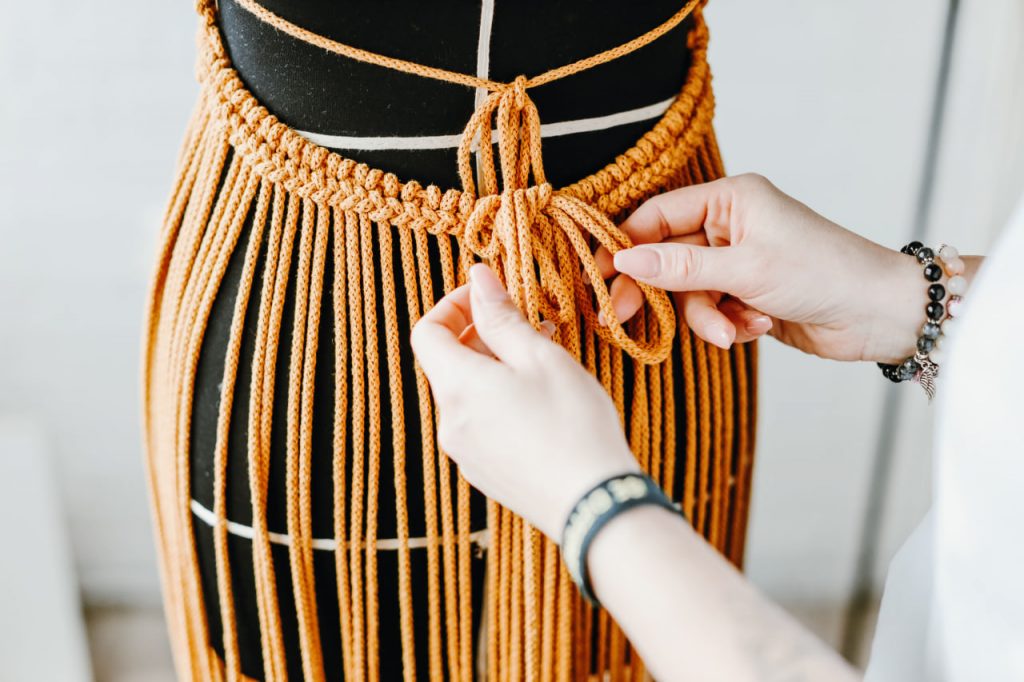Macrame, often seen as a simple crafting hobby, has a much deeper connection to mental well-being than many people realize. The art of knotting string to create intricate designs not only allows for self-expression but also offers a range of therapeutic benefits. In this article, we’ll explore how macrame can be a form of mindfulness and why it’s becoming a popular activity for improving mental health.
1. Mindfulness and Relaxation: A Creative Escape from Stress
The repetitive nature of macrame requires concentration and patience, which can help bring you into a state of mindfulness. As you focus on tying knots, the mind begins to quiet down, leaving little room for stress, anxiety, or other distractions. The soothing rhythm of knotting helps you immerse yourself in the present moment, providing a therapeutic escape from the pressures of daily life.
- Tip: Set aside dedicated time for macrame each week. Use this time to disconnect from electronics and fully focus on your craft, which will help you reset and recharge.
2. Improved Focus and Mental Clarity
Macrame can help enhance mental clarity by forcing you to slow down and focus on the task at hand. This form of concentration helps improve attention span and overall focus. For people who feel overwhelmed by multitasking, practicing macrame can act as a mental detox by allowing you to focus solely on one thing at a time.
- Tip: Start with a small project that you can complete in one sitting, such as a keychain or a mini wall hanging. This will give you a sense of accomplishment while improving your focus.
3. Reducing Anxiety and Promoting Relaxation
The hands-on nature of macrame has a calming effect on the body. When you engage in crafting, the production of serotonin—often referred to as the “happy hormone”—is triggered, which naturally reduces feelings of anxiety. The act of creating something with your hands also helps your body enter a state of relaxation, similar to the effects of meditation.
- Tip: Try incorporating breathing exercises while you macrame. Take deep, slow breaths as you tie each knot, creating a peaceful rhythm that aligns with your physical movements.
4. Boosting Creativity and Self-Esteem
As you see your macrame projects take shape, your sense of accomplishment grows, leading to a boost in self-esteem. Macrame encourages you to experiment with different patterns, colors, and designs, which stimulates creativity. Whether you’re crafting gifts for loved ones or creating décor for your home, the satisfaction of completing a piece can uplift your mood and reinforce your self-confidence.
- Tip: Don’t be afraid to try new techniques and designs as you progress. The more you explore, the more you will tap into your own creativity, which in turn boosts your sense of pride and achievement.
5. Social Connection and Community
Macrame can also serve as a means of social connection. Many crafters find joy in participating in workshops or joining online macrame communities where they can share their creations, exchange tips, and offer support. This sense of community can combat loneliness and provide a space for social interaction.
- Tip: Consider joining a macrame class or an online crafting group. Sharing your passion for macrame with others can foster meaningful friendships and support your mental health journey.
Conclusion
Macrame offers much more than just beautiful décor. Its therapeutic benefits, including reducing stress, improving mental clarity, boosting creativity, and promoting relaxation, make it an ideal craft for improving mental well-being. So, the next time you sit down to knot your threads, remember that you’re not just creating a work of art—you’re also nurturing your mental health.
By embracing macrame as a form of self-care, you can tap into the healing powers of creativity and mindfulness, making it a valuable tool for overall wellness.

